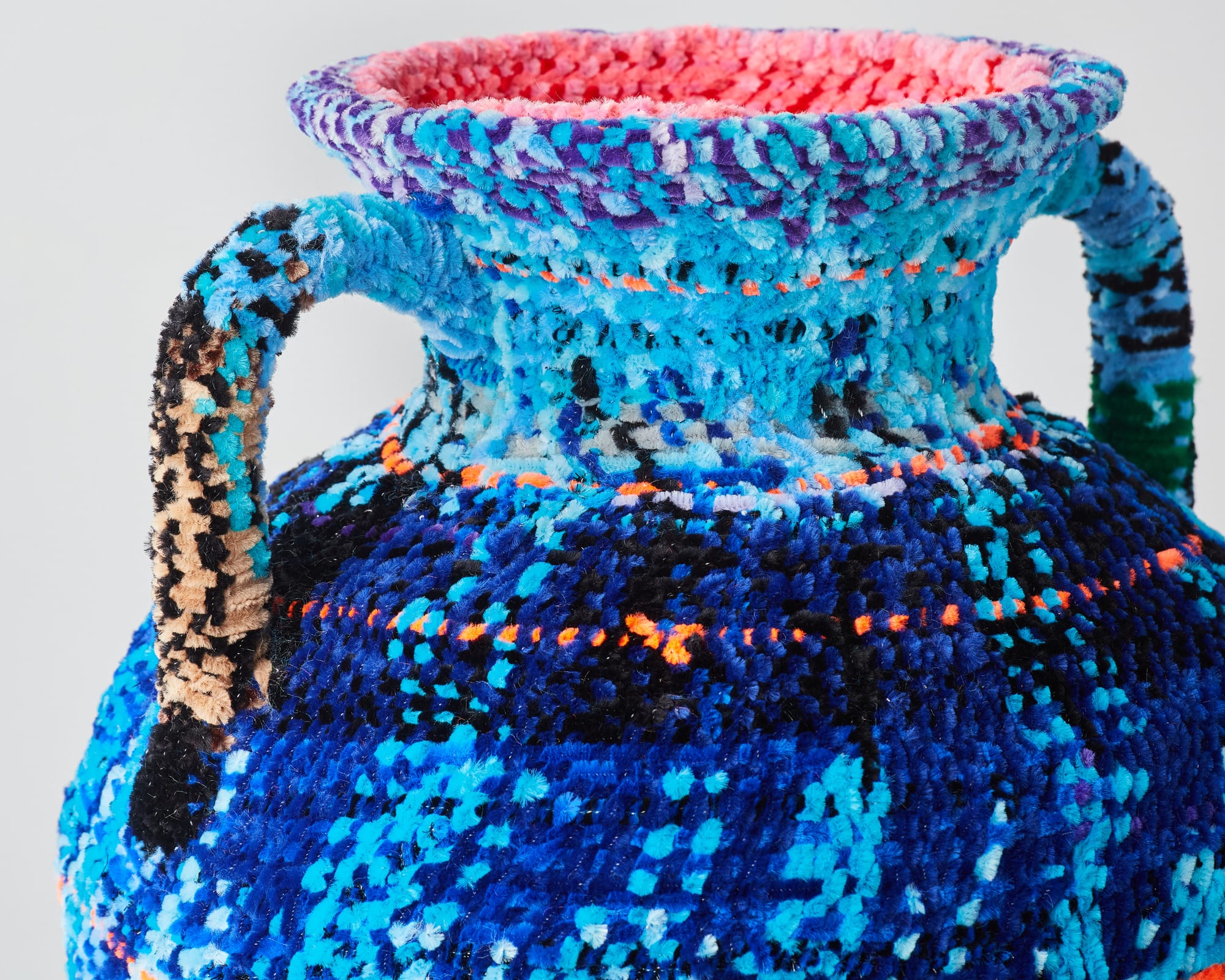This post was originally published on Colossal
“I was among the first in my family to go to college,” artist Salvador Dominguez says. “Years after graduating, I began to realize the biggest challenge was going to be sharing the work I make with those closest to me.”
When art is so deeply intertwined with identity, a profound irony can form when trying to share it with loved ones who haven’t had access to the same resources or lessons in Western art theory and history. Even when the work itself is rooted in shared culture and family connection, how do artists bridge this gap?

The Chicago-based artist confronts this question in a series of hand-woven vessels titled Mano de Obra. Paying homage to a nostalgic vibrancy from his upbringing in southern California and Mexico, the brilliant colors within Dominguez’s work serve as cultural markers. Memories of vividly painted houses and colorful statues inside corner stores and carnicerias, or butcher shops, guide the artist’s use of color and pattern, each component tethered to his sense of identity.
Pipe cleaners—which are fairly accessible and easily recognized by both children and adults—proved to be a clear choice as Dominguez contemplated different materials to work with. Weaving each slender, fuzz-covered wire into functional vessels greatly alters the value of the material in a fascinating way and evokes a familiar environment in which the artist was raised, where trade and craft were used interchangeably as currency.
Recently, Dominguez has begun to teach his mother, Silvia, the weaving techniques he developed with pipe cleaners. He shares:
Her labor within domestic life often went unseen, but her imagination came alive through craft and embroidery. By involving her in this creative process, I not only honor her contributions but also try to maintain our connection, transforming her labor into a visible and valued part of the work. I remain curious about how this collaborative effort has the potential to bridge the gap between generations, particularly since we live in separate parts of the country.

To stay inspired, the artist also collects a slew of domestic items. From his mother’s hand-embroidered tortilleros to household textiles like pillowcases and table runners from Indigenous artisans from Mexico, Dominguez’s collection of precious goods influences form, pattern, and palette in his own work. Though he has encountered these articles since early life, turning to them for research has established a new, unique relationship with the familiar objects.
Dominguez is anticipating a group exhibition in Antwerp, Belgium this May with de boer gallery. Find more work and updates on the artist’s website and Instagram.








Do stories and artists like this matter to you? Become a Colossal Member today and support independent arts publishing for as little as $7 per month. The article Salvador Dominguez Confronts Identity and Labor Through Woven Pipe Cleaner Vessels appeared first on Colossal.





0 Comments